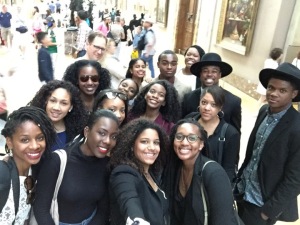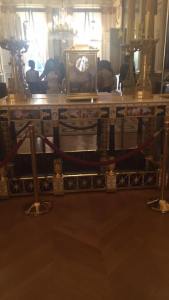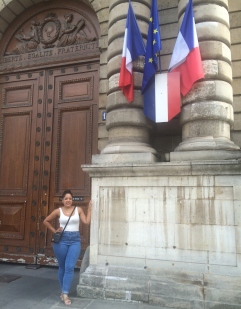My name is Markova Casseus and I am a senior in the college of Visual and Performing Arts at Syracuse University. I am majoring in Communication and Rhetorical Studies and double minoring in Music Industry and Public Communications. I’m originally from Brooklyn, NY and fell in love with Syracuse the very first time I visited. Ideally, I want to work in the Corporate Social Responsibility sector of a major Entertainment company. I believe my studies at Syracuse are preparing me for that in every way.
“If you are lucky enough to have lived in Paris as a young [woman], then wherever you go for the rest of your life it stays with you, for Paris is a moveable feast.”
-Ernest Hemingway
It is 7:45am, and my alarm goes off. I get up, stretch, and start my day. By 8:30am, I make my way to class on the metro. This was how my mornings started every day while I was in Paris. Three weeks later, I still find myself randomly waking up at 7:45, only this time I have nowhere to go.
I don’t think there are any words that can fully capture what participating in Paris Noir did for me. Having studied abroad for a semester prior to this, I did not think it was possible for me to consider Paris my home in just five weeks. However in this small amount of time that’s exactly what happened. In just three days, I learned how to use the metro. In just one week, I completed two walking tours that canvased the Left and Right Bank of Paris. After week two, I heard many stories of Black individuals that came to Paris and thrived there. By week four, I learned more about African American history than I had ever learned in my entire life. Week five, I had fully immersed myself in Paris because Paris had fully accepted me.

Nadaizja and I in our new jackets. The fashion designer, Sadio Bee is one of the many people we met and heard from in Paris.
There were moments when I missed America, but I came to appreciate what “home” really meant. I would not trade this experience for the world. Professor Mayes often asked us what the Noir in Paris Noir represented. At first I was unsure how to answer that. But now I say the Noir is like a quilt. Each piece, like each of the fifteen students is a little different from the other, but collectively we represent the uniqueness and importance of the African Diaspora. Stitched to that quilt you can find the passions of my cohort—each of us using these passions to fuel our independent research projects in Paris. You can also find growth, as none of us, including myself, returned to America the same way we left. You can find the stories we heard that inspired us to be greater. You can find love; because we want to eventually come back to Paris.
If you were in Paris with us, you would likely hear Professor Mayes say “Paris Noir is on the Move.”
Well we are still moving and the Noir in Paris moving within me. Paris Noir is a part of me, and I love it.























